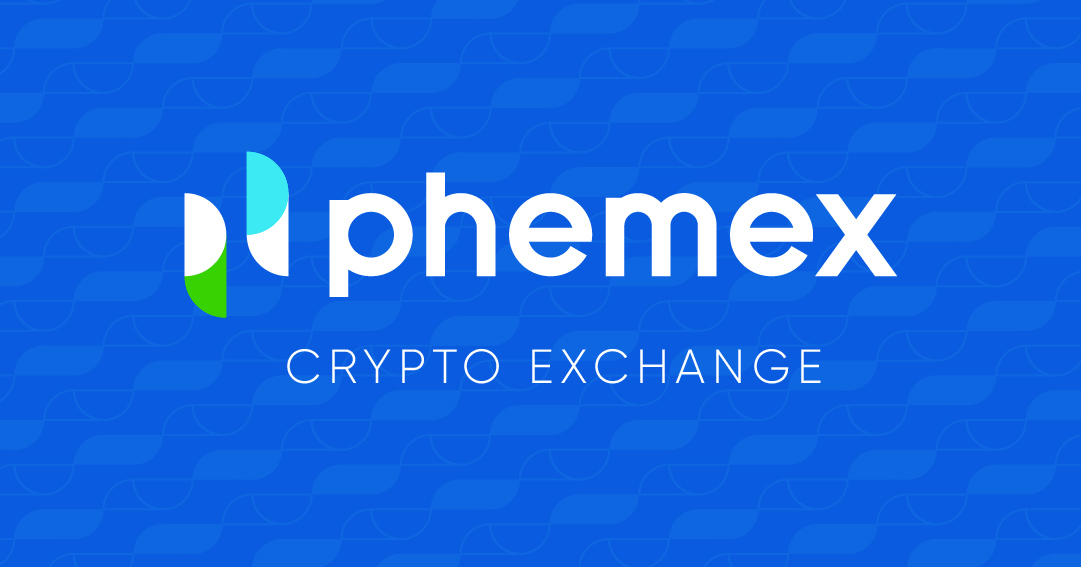Choosing the right cryptocurrency exchange can make a big difference in your trading experience. When looking at Kraken vs Phemex, you’ll find two popular platforms with distinct features that might suit different trading needs.
Both Kraken and Phemex offer cryptocurrency trading services, but they differ in terms of fees, available cryptocurrencies, trading types, and user experience. Kraken has built a reputation as one of the oldest and most secure exchanges, while Phemex has gained attention for its focus on futures trading and competitive fee structure.
You might prefer Kraken if security and regulatory compliance are your top concerns. Phemex might be better if you’re interested in futures trading or looking for lower fees. Understanding these differences will help you pick the exchange that best matches your trading goals.
Kraken Vs Phemex: At A Glance Comparison
When choosing between Kraken and Phemex for your cryptocurrency trading needs, several key differences can help you make the right decision.
Both platforms are popular crypto exchanges, but they cater to different types of traders. Here’s a quick comparison of their main features:
| Feature | Kraken | Phemex |
|---|---|---|
| Founded | 2011 | 2019 |
| Security | High (established reputation) | High (but newer) |
| Trading Fees | Generally higher | Generally lower |
| User Interface | More traditional | Modern, intuitive |
| Target Users | Beginners to advanced | Focus on experienced traders |
| Supported Cryptocurrencies | Wide range | More limited selection |
| Leverage Trading | Available, limited | Up to 100x (main feature) |
Kraken is one of the oldest crypto exchanges, giving it a strong track record for security and reliability. You’ll find it works well if you’re looking for a wide range of cryptocurrencies.
Phemex, though newer, has quickly gained popularity for its futures trading and high leverage options. If you’re interested in trading with leverage, Phemex offers up to 100x on certain pairs.
The fee structure differs between the two platforms. Kraken typically charges higher fees for standard trading, while Phemex offers more competitive rates, especially for high-volume traders.
Your trading style should guide your choice. Kraken might be better if you value institutional credibility and diverse coin options. Phemex could be your pick if you prioritize lower fees and advanced trading features.
Kraken Vs Phemex: Trading Markets, Products & Leverage Offered
Kraken and Phemex offer different trading options to meet your cryptocurrency needs. Both platforms support spot trading, allowing you to buy and sell crypto directly.
Kraken provides a more comprehensive set of trading products. You can access spot trading, margin trading with up to 5x leverage, and derivatives like futures contracts. The platform also offers staking services where you can earn rewards on certain cryptocurrencies.
Phemex stands out with its higher leverage options. You can trade with up to 100x leverage on Phemex, making it attractive if you’re interested in high-risk, high-reward trading strategies. This is significantly higher than Kraken’s 5x offering.
Products Comparison:
| Feature | Kraken | Phemex |
|---|---|---|
| Spot Trading | ✓ | ✓ |
| Margin Trading | ✓ (up to 5x) | ✓ (up to 100x) |
| Futures | ✓ | ✓ |
| Staking | ✓ | Limited |
| Earn Products | Savings options | Savings and predictions markets |
Kraken Pro offers advanced charting tools and lower fees compared to the standard Kraken platform. This makes it better suited for day trading activities.
Phemex has a straightforward interface that works well for mobile users. If you’re looking for fast-paced trading with high leverage, Phemex might be your preferred choice.
The cryptocurrency selection differs between platforms too. Kraken typically supports more established cryptocurrencies, while Phemex offers a mix of mainstream and some alternative options.
Kraken Vs Phemex: Supported Cryptocurrencies
When choosing between Kraken and Phemex, the variety of cryptocurrencies available on each platform is an important factor to consider.
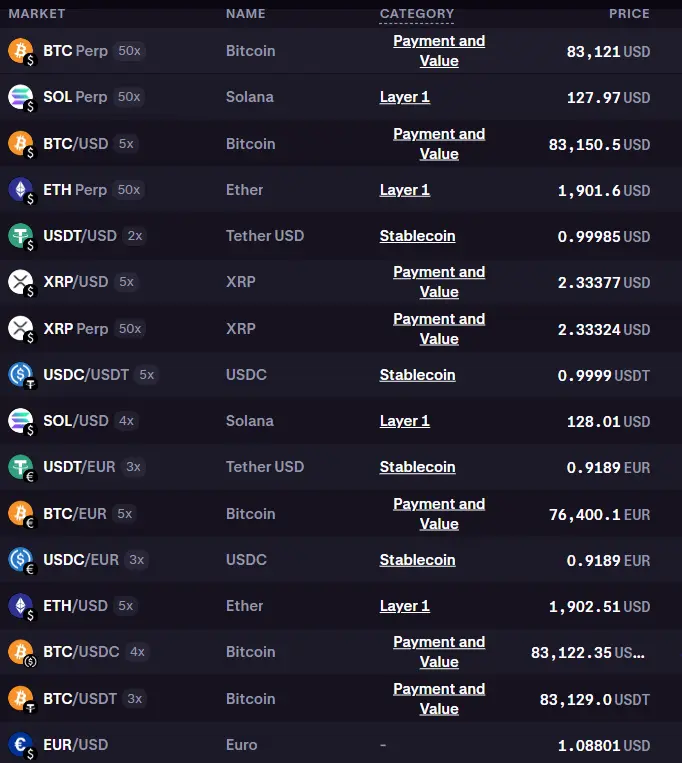
Kraken offers an impressive selection with support for over 422 cryptocurrencies and more than 1,091 trading pairs. This extensive range gives you access to both major coins and smaller altcoins.

Phemex, while offering a solid selection, doesn’t match Kraken’s extensive cryptocurrency support. Based on current data, Phemex offers fewer coins and trading pairs.
Cryptocurrency Support Comparison:
| Exchange | Cryptocurrencies | Trading Pairs |
|---|---|---|
| Kraken | 422+ | 1,091+ |
| Phemex | Fewer options | Fewer pairs |
The wider selection on Kraken may be beneficial if you’re looking to diversify your portfolio or trade less common altcoins. You’ll have more options to choose from as you develop your trading strategy.
It’s worth noting that both exchanges regularly add new cryptocurrencies. However, Kraken consistently maintains a larger selection.
If you primarily trade popular cryptocurrencies like Bitcoin and Ethereum, either platform will meet your basic needs. But for those wanting access to a broader market of digital assets, Kraken’s extensive offerings provide a clear advantage.
Also Read: Orbit Crypto Options: Navigating the Future of Digital Assets
When making your decision, consider which specific cryptocurrencies you plan to trade and verify they’re available on your chosen platform.
Kraken Vs Phemex: Trading Fee & Deposit/Withdrawal Fee Compared
When choosing between Kraken and Phemex, understanding their fee structures is crucial for your trading strategy.
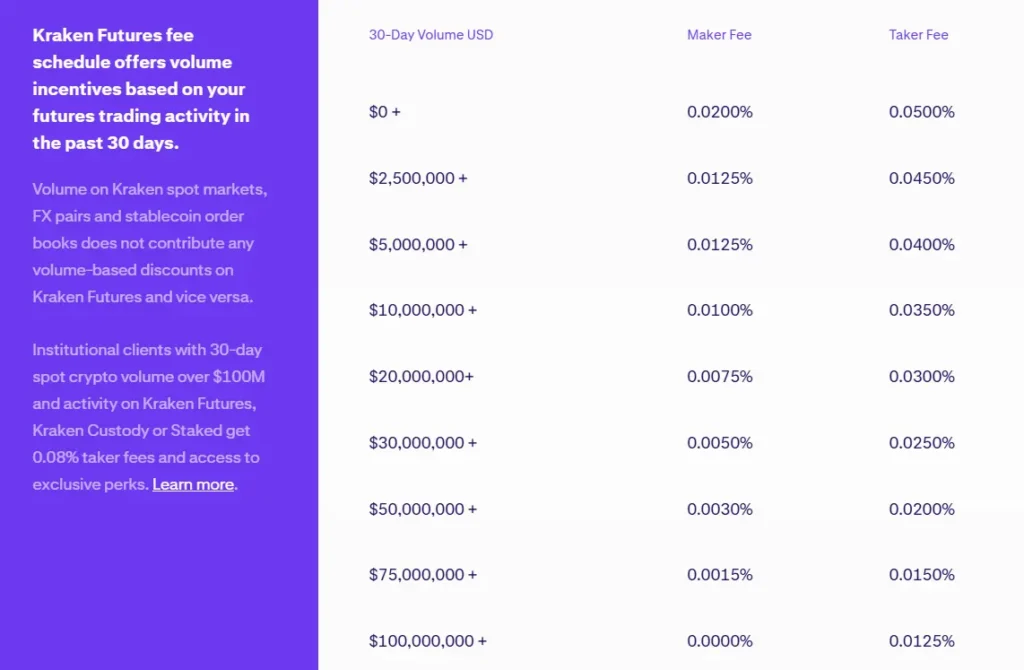
Trading Fees
Kraken offers lower trading fees with rates up to 0.40%, while Phemex charges slightly higher at 0.30% to 0.40% for most transactions.
Both exchanges use a maker-taker fee model, which rewards you for adding liquidity to the market with lower maker fees.
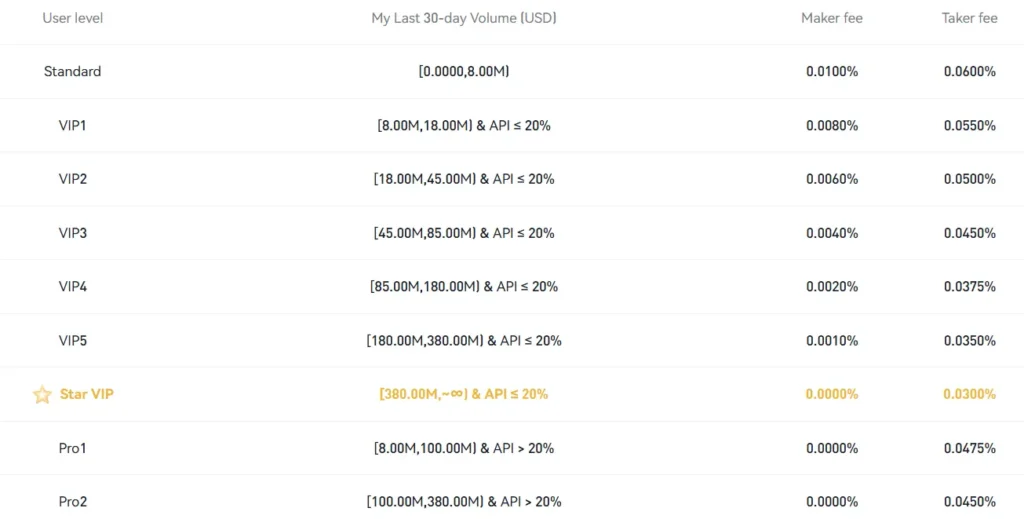
Withdrawal Fees
For Bitcoin withdrawals, Phemex charges 0.0004 BTC while Kraken has a lower fee of 0.0002 BTC. This difference may seem small but can add up with frequent withdrawals.
Phemex stands out by offering 0% withdrawal fees on some assets, which can be a significant advantage if you make regular withdrawals.
Deposit Methods
Both platforms support various deposit methods including bank transfers and cryptocurrency deposits.
You’ll find that deposit fees vary based on your payment method and location. Bank transfers typically incur lower fees than credit card deposits on both platforms.
Fee Reduction Options
Both exchanges offer ways to reduce your trading fees:
- Higher trading volume
- Holding platform tokens
- VIP membership levels
Consider your trading frequency and volume when deciding between these platforms. If you’re a high-volume trader, Kraken’s lower base fee structure might save you more money in the long run.
Kraken Vs Phemex: Order Types
When trading cryptocurrencies, the types of orders available can significantly impact your trading strategy. Both Kraken and Phemex offer various order types to meet different trading needs.
Kraken Order Types:
- Market orders
- Limit orders
- Stop-loss orders
- Take-profit orders
- Conditional close orders
- Settle position orders
Kraken provides these options across its Simple and Pro accounts. The Pro account gives you access to more advanced trading features that experienced traders often prefer.
Phemex Order Types:
- Market orders
- Limit orders
- Stop-limit orders
- Conditional orders
- One-cancels-the-other (OCO) orders
- Post-only orders
Phemex focuses on providing order types that appeal to active traders. Their platform includes specialized orders that help you manage risk while maximizing potential profit.
Both exchanges support the essential market and limit orders that most traders regularly use. However, if you’re looking for more sophisticated trading options, you’ll want to compare the specific advanced orders each platform offers.
The availability of conditional orders on both platforms gives you the flexibility to set up automated trading strategies. This can be particularly useful if you can’t monitor the markets constantly.
Your trading style should guide your choice between these exchanges. Day traders might appreciate Phemex’s specialized order types, while those making less frequent trades might find Kraken’s offerings sufficient.
Kraken Vs Phemex: KYC Requirements & KYC Limits
Kraken and Phemex have different approaches to Know Your Customer (KYC) requirements, which may affect your trading experience.
Kraken follows a strict KYC policy. You must verify your identity before trading on their platform. This includes providing personal information, identification documents, and sometimes proof of address.
Phemex, on the other hand, offers more flexibility. According to the search results, Phemex does not require KYC for basic trading. You can deposit funds and start trading without identity verification.
However, there’s an important caveat with Phemex. While they allow deposits without KYC, they impose withdrawal limits for unverified accounts. This means you can only withdraw up to a certain amount without completing verification.
Some users have reported issues with Phemex’s approach. One search result mentions that Phemex may request KYC after you’ve made “a decent size deposit,” which some users consider problematic.
KYC Requirements Comparison:
| Exchange | KYC Required | Withdrawal Without KYC |
|---|---|---|
| Kraken | Yes (mandatory) | Not allowed |
| Phemex | Optional | Limited amounts |
If complete privacy is your priority, Phemex might seem appealing initially. But be aware of potential withdrawal restrictions that could affect your ability to access your funds.
For full regulatory compliance and unrestricted access to all features, Kraken offers a more straightforward approach with its upfront KYC requirements.
Kraken Vs Phemex: Deposits & Withdrawal Options
When choosing between Kraken and Phemex, understanding their deposit and withdrawal options is crucial for a smooth trading experience.
Kraken offers a variety of fiat deposit methods including bank transfers, SWIFT, and credit cards. You can fund your account with USD, EUR, GBP, and several other currencies.
Withdrawal options on Kraken include bank transfers and cryptocurrency withdrawals to external wallets. Kraken charges varying fees for fiat withdrawals based on the method and currency.
Phemex primarily focuses on crypto deposits and withdrawals. The exchange supports fewer fiat options compared to Kraken, which might limit your funding choices if you prefer using traditional currencies.
Both exchanges support major cryptocurrencies for deposits and withdrawals, including Bitcoin, Ethereum, and many altcoins.
Fee comparison:
| Exchange | Fiat Deposit Fees | Crypto Deposit Fees | Withdrawal Fees |
|---|---|---|---|
| Kraken | Varies by method | Free | Varies by currency |
| Phemex | Limited options | Free | Network fees apply |
Kraken generally provides more comprehensive fiat on-ramp options, making it easier for beginners to get started with cryptocurrency trading.
Processing times differ between the exchanges. Crypto deposits typically process faster on both platforms, while fiat transactions may take 1-3 business days depending on your payment method.
Kraken Vs Phemex: Trading & Platform Experience Comparison
When choosing between Kraken and Phemex for your trading needs in 2025, the platform experience can make all the difference in your success.
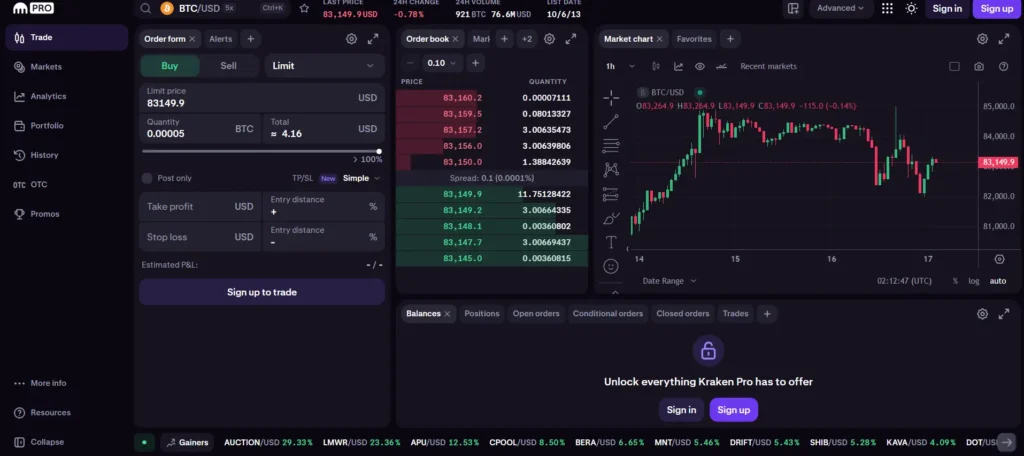
Kraken offers a more traditional trading interface that many established traders find comfortable. You’ll get access to spot trading with a wide selection of cryptocurrencies and fiat options.

Phemex, on the other hand, shines with its futures trading capabilities. The platform has gained popularity among day traders who need quick execution and advanced trading tools.
User Interface Comparison:
- Kraken: Clean, professional design with detailed charts
- Phemex: Modern, sleek interface optimized for mobile trading
Both platforms offer mobile apps, but Phemex’s app receives higher marks for responsive design and faster loading times when market conditions change rapidly.
Trading fees differ significantly between the platforms. Kraken typically charges higher fees but provides more comprehensive customer support. Phemex offers competitive fee structures especially appealing to high-volume traders.
Security Features:
| Feature | Kraken | Phemex |
|---|---|---|
| 2FA | Yes | Yes |
| Cold Storage | 95% of assets | Majority of assets |
| Insurance | Limited | Yes |
You’ll find more educational resources on Kraken, which benefits beginners. Phemex focuses on tools that appeal to experienced traders, including advanced charting and quick order execution.
Trading volumes on both platforms remain strong in 2025, with Kraken maintaining its reputation for reliability during high market volatility.
Kraken Vs Phemex: Liquidation Mechanism
Liquidation is a critical aspect of leveraged trading that triggers when your position falls below maintenance margin requirements. Both Kraken and Phemex have distinct approaches to handling this process.
Kraken employs a gradual liquidation mechanism. When your position approaches the liquidation price, Kraken first sends warnings to your account. Their system attempts partial liquidations where possible, selling only enough of your position to bring your margin back to acceptable levels.
Phemex uses a more aggressive liquidation approach with its insurance fund model. When your position hits the liquidation price, Phemex typically closes the entire position at once. This immediate action helps prevent further losses but gives you less time to respond.
Here’s a comparison of key liquidation features:
| Feature | Kraken | Phemex |
|---|---|---|
| Warning notifications | Yes | Limited |
| Partial liquidations | Yes | Rarely |
| Liquidation speed | Gradual | Immediate |
| Maximum leverage | 5x | Up to 100x |
| Fee during liquidation | Higher | Standard |
The higher leverage offered by Phemex (up to 100x) naturally increases your liquidation risk compared to Kraken’s more conservative 5x maximum.
You can protect yourself from liquidation on both platforms by setting stop-loss orders and maintaining adequate margin. Phemex’s higher leverage requires more careful position management and closer monitoring of market movements.
Kraken Vs Phemex: Insurance
When choosing a crypto exchange, insurance protection is a critical factor to consider. This security feature can protect your assets if the exchange faces hacks or insolvency.
Kraken offers a more robust insurance framework than Phemex. Kraken maintains an insurance fund that covers certain losses in case of a security breach. Your assets stored in Kraken’s offline cold storage are particularly secure.
Kraken also keeps the majority of user funds (approximately 95%) in air-gapped cold storage. This separation from internet-connected systems provides an extra layer of protection.
Phemex, while maintaining security protocols, has a less comprehensive insurance system. They offer some protection through their own reserves, but the coverage is not as extensive as Kraken’s.
Both exchanges implement security measures beyond insurance, including:
- Two-factor authentication (2FA)
- Anti-phishing protection
- Withdrawal address whitelisting
- Regular security audits
When evaluating your options, consider how much of your crypto portfolio will be stored on the exchange. For larger holdings, Kraken’s more established insurance protections may give you greater peace of mind.
Remember that neither exchange offers the same level of protection as traditional banking insurance programs like FDIC. It’s always wise to consider using personal hardware wallets for long-term storage of significant crypto assets.
Kraken Vs Phemex: Customer Support
When choosing between Kraken and Phemex, customer support can be a deciding factor. Both platforms offer various support options, but there are notable differences in their approaches.
Kraken provides 24/7 customer support through live chat, email, and an extensive help center. You can expect response times typically within minutes for live chat and a few hours for email inquiries.
Phemex also offers 24/7 support through similar channels. Their live chat function is accessible directly from their trading interface, making it convenient to get help while trading.
Response Time Comparison:
| Platform | Live Chat | Phone | |
|---|---|---|---|
| Kraken | Minutes | 1-24 hours | Limited availability |
| Phemex | Minutes | 2-48 hours | Not available |
Kraken stands out with its phone support option for urgent account issues, though this service isn’t available for all types of inquiries.
Both exchanges provide detailed knowledge bases with FAQs, tutorials, and troubleshooting guides. Kraken’s documentation tends to be more comprehensive, especially for beginners.
Phemex offers additional support through active community channels on Telegram and Discord. You can often get quick answers from community managers or other users.
Language support is another consideration. Kraken offers support in more languages than Phemex, which primarily focuses on English with limited multilingual capabilities.
For technical issues, Kraken typically provides more detailed solutions, while Phemex emphasizes quick resolution of common trading problems.
Kraken Vs Phemex: Security Features
When choosing a crypto exchange, security should be your top priority. Both Kraken and Phemex offer robust security measures, but they differ in some important ways.
Kraken is known for its strong security record. Since launching in 2011, it has never experienced a major security breach. This is impressive in the crypto world.
Kraken stores most user funds in cold wallets, keeping them offline and safe from hackers. They also offer two-factor authentication (2FA) and email verification for withdrawals.
Kraken’s Key Security Features:
- Cold storage for majority of funds
- 2FA options (Google Authenticator, YubiKey)
- Global Settings Lock for account changes
- PGP email encryption
- 24/7 surveillance at physical locations
Phemex, founded in 2019, has also maintained a good security record. Like Kraken, they keep most user assets in cold storage.
Phemex’s Key Security Features:
- Cold wallet storage
- 2FA authentication
- Anti-phishing codes
- Withdrawal address whitelist
- Regular security audits
Both platforms offer insurance protection, but Kraken’s coverage is more comprehensive. Kraken also has a longer track record, which may give you more confidence in their security practices.
Also Read: How often do crypto options expire?
For institutional traders, Kraken offers additional security features like sub-accounts and customizable API access. Phemex provides similar options but with less granular control.
Is Kraken A Safe & Legal To Use?
Kraken is generally considered a safe cryptocurrency exchange. It has built a strong reputation since its founding in 2011, making it one of the longest-running exchanges in the industry.
Security is a priority for Kraken. The platform uses strong encryption, two-factor authentication, and cold storage for most digital assets. These measures help protect your funds from potential threats.
However, according to the search results, Kraken faced legal challenges in 2023. The SEC charged Kraken for operating as an unregistered securities broker, dealer, and clearing agency.
This regulatory issue doesn’t necessarily mean Kraken is unsafe for users, but it does highlight ongoing compliance challenges in the crypto industry.
Kraken operates legally in many countries and regions. Before using the platform, you should check if it’s authorized to operate in your location. Regulations vary by country, and Kraken may offer different services depending on where you live.
When using Kraken, consider these safety practices:
- Enable all security features
- Use a strong, unique password
- Set up two-factor authentication
- Be cautious of phishing attempts
- Withdraw large amounts to private wallets
While no exchange is 100% risk-free, Kraken’s longevity and security measures make it a relatively safe option for cryptocurrency trading compared to newer platforms.
Is Phemex A Safe & Legal To Use?
Phemex is widely recognized as a secure and legitimate cryptocurrency exchange in 2025. Based on search results, Phemex has maintained a strong security record with no reported hacks throughout its operation.
The platform is regulated, which adds a layer of protection for your investments. This regulation helps ensure the exchange follows proper financial practices and safeguards user funds.
Phemex offers traders the ability to trade crypto with up to 100x leverage. While this presents opportunities for experienced traders, you should understand the risks associated with leveraged trading before using this feature.
The exchange ranks among the top platforms for day trading in 2025, appearing on multiple “best of” lists alongside established names like Binance, Coinbase, and Kraken.
Security Features:
- Centralized exchange structure with proven security protocols
- Regulatory compliance in relevant jurisdictions
- No history of security breaches
For crypto day traders, Phemex provides a trustworthy environment with advanced trading options. The platform’s reliability makes it a viable choice if you’re looking for a dependable exchange.
Before creating an account, you should verify that Phemex operates legally in your specific country or region, as cryptocurrency regulations vary worldwide.
Frequently Asked Questions
Many traders compare Kraken and Phemex when choosing a crypto exchange. These platforms differ in several key aspects including fees, available cryptocurrencies, security features, and user experience.
What are the main differences between Kraken and Phemex trading platforms?
Kraken focuses on being a comprehensive exchange with strong regulatory compliance and security. It offers spot trading, margin trading, and futures.
Phemex specializes in derivatives trading with advanced features for experienced traders. It provides perpetual contracts and futures trading with high leverage options.
Kraken has a more traditional exchange interface while Phemex offers a faster trading platform designed for active traders. Kraken serves both beginners and experienced users, whereas Phemex caters more to professional traders.
Which exchange offers superior security features: Kraken or Phemex?
Kraken has an exceptional security record with no major hacks since its founding in 2011. It stores 95% of assets in offline cold storage and offers whitelisting, two-factor authentication, and encrypted email verification.
Phemex implements a cold wallet system for fund security and offers two-factor authentication. It also uses an advanced trading engine designed by former Morgan Stanley executives.
Kraken generally receives higher marks for security, with stronger regulatory compliance and a longer track record of protecting user funds.
How do the transaction fees compare between Kraken and Phemex?
Kraken uses a maker-taker fee structure ranging from 0.16% to 0.26% for most traders, with discounts for high-volume traders. Additional fees apply for certain funding methods.
Phemex typically offers lower fees than Kraken, especially for futures trading. Its spot trading fees start at 0.1% and can decrease with higher trading volumes.
Phemex also periodically runs zero-fee promotions for certain trading pairs, making it potentially more cost-effective for active traders.
Which platform between Kraken and Phemex provides a wider range of cryptocurrencies?
Kraken supports over 200 cryptocurrencies for trading, including major coins and many altcoins. It regularly adds new tokens after thorough vetting processes.
Phemex offers fewer cryptocurrencies overall, focusing more on major coins for its derivatives products. Its spot exchange has a more limited selection compared to Kraken.
For traders seeking access to a diverse range of altcoins, Kraken typically provides more options than Phemex.
Are there differences in customer support quality between Kraken and Phemex?
Kraken offers 24/7 customer support through live chat, email, and an extensive help center. It’s known for responsive service and has phone support in certain regions.
Phemex provides 24/7 support primarily through chat and email. It also maintains an active community on social media platforms where users can get assistance.
User reviews suggest Kraken generally has more consistent customer service, while Phemex support quality can vary during high-volume periods.
How do Kraken and Phemex compare in terms of liquidity and trading volume?
Kraken has higher overall trading volume and liquidity, particularly for spot trading pairs. This results in tighter spreads and less slippage for most trades.
Phemex shows strong liquidity specifically in its derivatives markets, especially for popular trading pairs like BTC/USD and ETH/USD perpetual contracts.
Trading volume on both platforms varies by specific trading pairs, with Kraken typically showing stronger numbers for spot trading and Phemex competing well in the derivatives segment.
Phemex Vs Kraken Conclusion: Why Not Use Both?
Both Phemex and Kraken offer valuable services for crypto traders in 2025, each with distinct advantages.
Kraken stands out with its institutional services, including spot trading, staking options, OTC trading, and futures trading. It’s known for reliability and comprehensive features that appeal to serious traders.
Phemex, on the other hand, combines speed, reliability, and affordability in an intuitive platform. It’s suitable for both beginners and experienced traders, offering high leverage options and cryptocurrency derivatives trading.
You don’t necessarily have to choose between them. Many traders use multiple exchanges to take advantage of different features, fee structures, and trading options.
Using both platforms might allow you to benefit from Kraken’s institutional-grade security and wider feature set while also taking advantage of Phemex’s speed and affordability for certain trades.
Consider your specific trading needs. If you’re looking for derivatives and high leverage, Phemex might be your go-to. For institutional features and staking, Kraken could be more suitable.
The crypto market in 2025 rewards flexibility. Having accounts on both platforms gives you more options and helps you adapt to market conditions and opportunities as they arise.
Remember to consider the security aspects, fee structures, and available cryptocurrencies on both platforms before making your trading decisions.
Compare Kraken and Phemex with other significant exchanges

